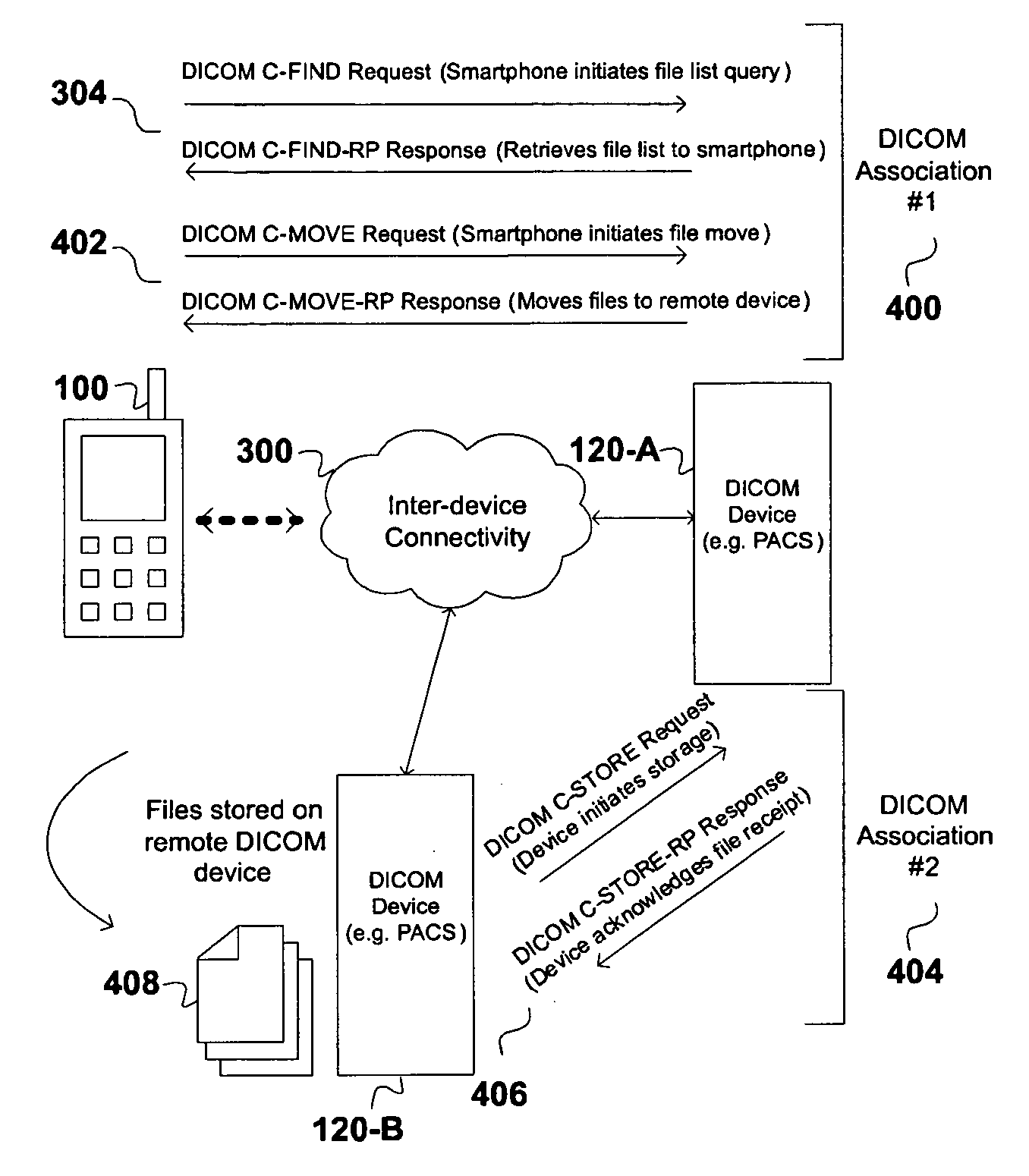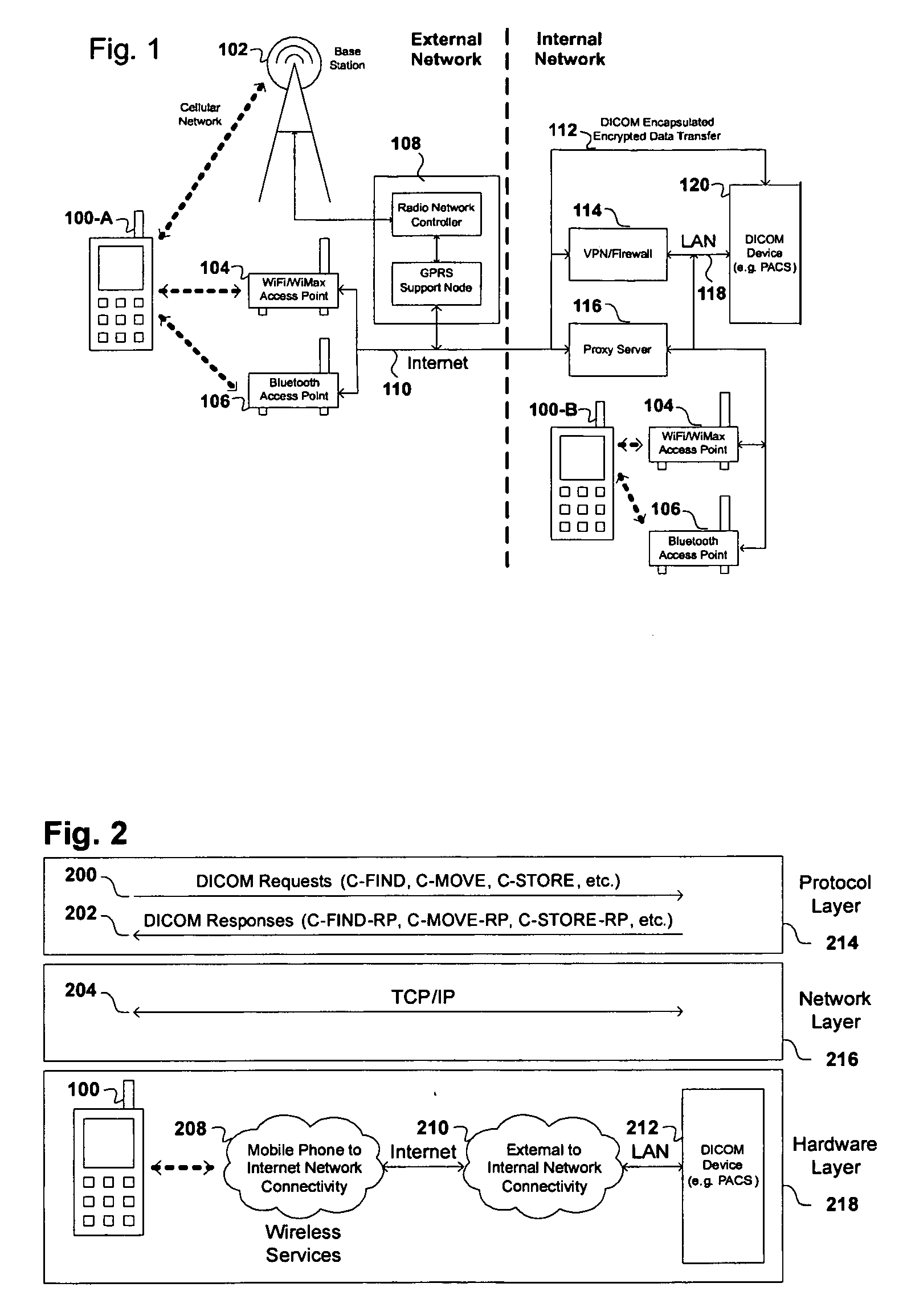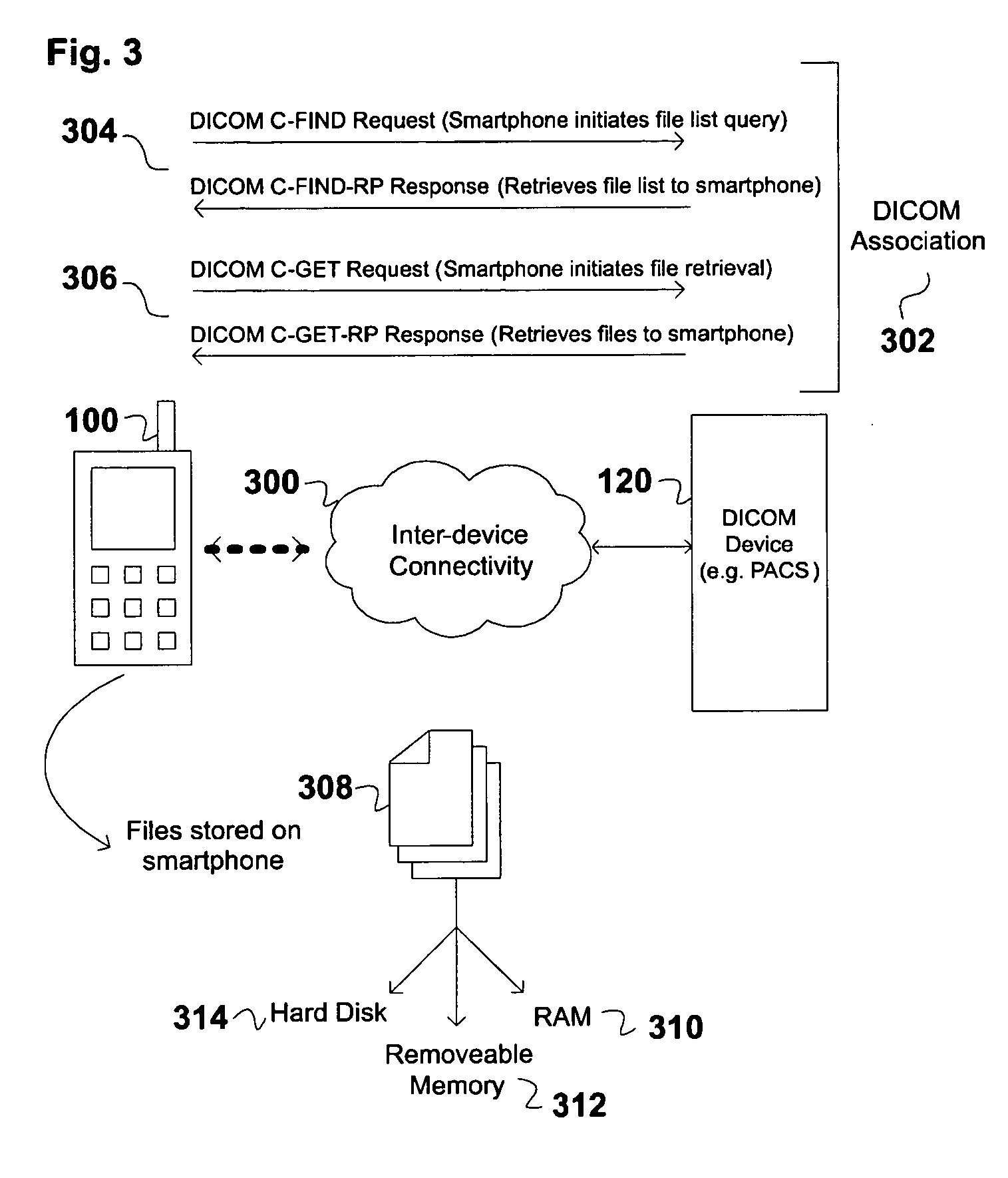Use of Mobile Communications Device to Direct Medical Workflow and as a Repository of Medical information
a mobile communication and workflow technology, applied in the direction of wireless communication, messaging/mailboxes/announcements, instruments, etc., can solve the problems of patient treatment delays, inability to maximize the benefit of the healthcare system to the patient, and inability to readily access needed information when needed, so as to facilitate secure hipaa compliant transfer of medical information
- Summary
- Abstract
- Description
- Claims
- Application Information
AI Technical Summary
Benefits of technology
Problems solved by technology
Method used
Image
Examples
Embodiment Construction
[0027]Unless defined otherwise, all technical and scientific terms and any acronyms used herein have the same meanings as commonly understood by one of ordinary skill in the art in the field of the invention. Although any methods and materials similar or equivalent to those described herein can be used in the practice of the present invention, the preferred methods, devices, and materials are described herein.
[0028]All patents, patent applications, and publications mentioned herein are incorporated herein by reference to the extent allowed by law for the purpose of describing and disclosing the devices and methodologies reported therein that might be used with the present invention. However, nothing herein is to be construed as an admission that the invention is not entitled to antedate such disclosure by virtue of prior invention.
[0029]In one aspect, the present invention provides a secure system for finding wanted medical information and securely directing the flow of that informa...
PUM
 Login to View More
Login to View More Abstract
Description
Claims
Application Information
 Login to View More
Login to View More - R&D
- Intellectual Property
- Life Sciences
- Materials
- Tech Scout
- Unparalleled Data Quality
- Higher Quality Content
- 60% Fewer Hallucinations
Browse by: Latest US Patents, China's latest patents, Technical Efficacy Thesaurus, Application Domain, Technology Topic, Popular Technical Reports.
© 2025 PatSnap. All rights reserved.Legal|Privacy policy|Modern Slavery Act Transparency Statement|Sitemap|About US| Contact US: help@patsnap.com



